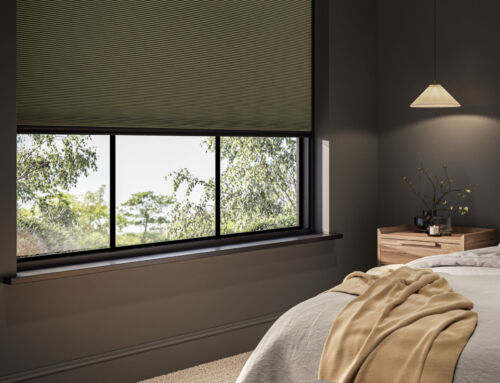Choosing the right window treatment can be a daunting task, especially if you’re not familiar with the various types of blinds available. Two of the most popular options are horizontal and vertical blinds, both of which offer unique benefits and aesthetic appeal.
In this article, we’ll discuss how to choose the perfect horizontal and vertical blinds for your home, with a particular focus on curved vertical blinds. Let’s get started!
Understanding Horizontal and Vertical Blinds
Before diving into the selection process, it is crucial to understand the basic differences between horizontal and vertical blinds.
Horizontal blinds consist of slats that run parallel to the window sill and are typically made of wood, faux wood, or aluminium. They are perfect for smaller windows and can be adjusted to control the amount of light and privacy in a room.
On the other hand, vertical blinds consist of vertical slats suspended from a track system and are often made of fabric, vinyl, or PVC. Curved vertical blinds, a popular variation, feature curved slats that add a touch of elegance and flair to any space. Vertical blinds are ideal for larger windows and sliding doors, as they can be easily moved to one side to allow access or to control light and privacy.
Considerations for Choosing the Perfect Blinds
Now that you know the basics let’s explore how to choose the perfect horizontal and vertical blinds for your home.
- Size and Shape of Windows or Doors
The size and shape of your windows or doors play a significant role in determining the type of blinds that will work best for your space. Horizontal blinds work exceptionally well for smaller windows and can be customised to fit windows with unique shapes, such as arches or circular windows.
Vertical blinds, especially the curved variety, are an excellent choice for larger windows and sliding doors, as they provide full coverage and can be drawn to one side when needed. Additionally, curved vertical blinds can add an elegant touch to tall, narrow windows or those with an irregular shape.
- Light Control and Privacy
Both horizontal and vertical blinds offer excellent light control and privacy options. However, the way they function differs slightly. Horizontal blinds can be tilted to control the amount of light entering a room, while vertical blinds can be drawn to one side or split in the middle to provide varying levels of light and privacy.
If you prefer a more precise control over light and privacy, horizontal blinds may be a better option for you. However, if you have larger windows or sliding doors and require a more flexible solution, vertical blinds, particularly the curved variety, are an ideal choice.
- Aesthetics and Design
The style of your space and your personal preferences play a significant role in choosing the perfect blinds. Horizontal blinds offer a classic, timeless look and are available in various materials, such as wood, faux wood, and aluminium, allowing you to select the perfect design to match your interior.
Vertical blinds, especially the curved variety, add a touch of sophistication and elegance to any space. With a wide range of fabric, vinyl, and PVC options, curved vertical blinds can be customised to suit your design preferences and seamlessly blend with your existing décor.
- Maintenance and Durability
Ease of maintenance and durability are essential factors to consider when selecting blinds. Horizontal blinds tend to collect dust easily, requiring regular cleaning to maintain their appearance. However, they are generally more durable and can withstand daily wear and tear.
Vertical blinds, particularly the curved variety, are easier to clean and maintain, as they don’t accumulate as much dust as horizontal blinds. Moreover, they are less prone to damage from children or pets, making them a more practical choice for busy households.
- Installation and Budget
Lastly, consider the installation process and your budget when choosing between horizontal and vertical blinds. Horizontal blinds are relatively easy to install, with a DIY installation often being a feasible option. Conversely, vertical blinds, especially the curved variety, may require professional installation, which can increase the overall cost.
Both types of blinds are available in a range of price points, with horizontal blinds typically being more affordable than vertical blinds. However, the cost can vary significantly depending on the material, size, and design of the blinds.
Conclusion
Choosing the perfect horizontal and vertical blinds for your home is a crucial decision that requires careful consideration of various factors. By understanding the differences between horizontal and vertical blinds and considering aspects of choosing the perfect blinds, you can make an informed decision that suits your needs and preferences. So, take your time, explore your options, and select the best blinds that will enhance your home and create a welcoming atmosphere for you and your family.
Looking for high-quality vertical blinds for your home? Then look no further than Shady Blinds! Our blinds are made with premium quality materials and designed to provide exceptional functionality and style. Whether you opt for classic vertical blinds or curved vertical blinds, we offer a wide range of options to suit your needs and preferences. Browse our shop today so you can elevate your home with our premium quality blinds!






Leave A Comment